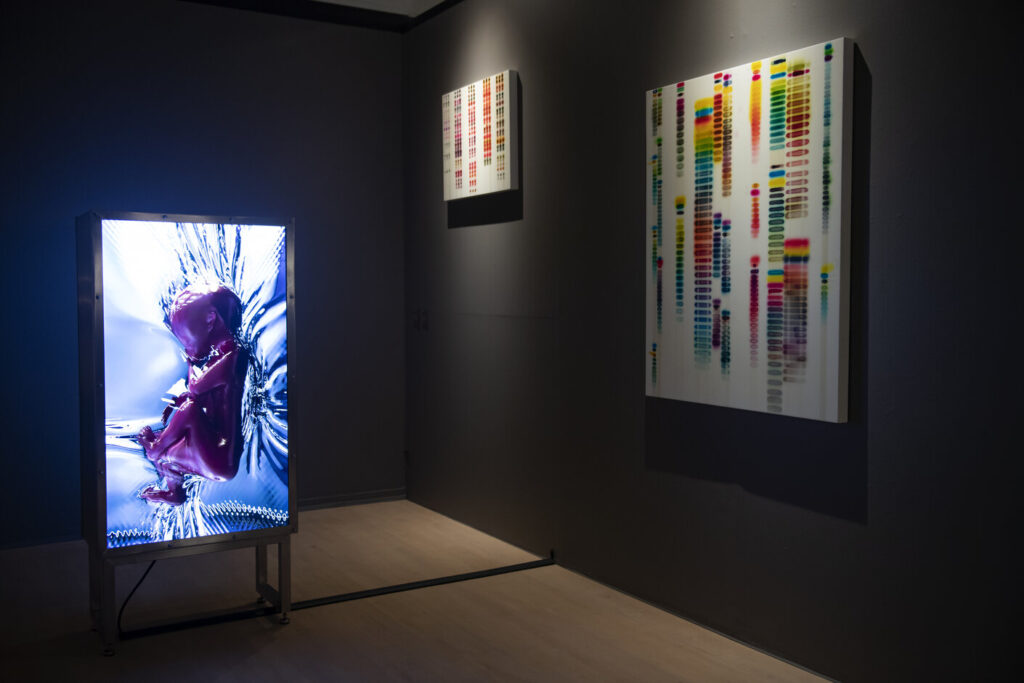Wunderkammer 3 – DNArt
24. April 2021 – 16. January 2022
Life’s big questions form the basis of Wunderkammer 3 – DNArt: Who are we? Where do we come from? Where are we going from here? The exhibition is organized in cooperation with DNA researchers who work with the extraction of knowledge from life’s invisible, but most fundamental building blocks; but how is this knowledge, procured through their investigations, made relevant? How can we sense and understand those aspects of reality that are imperceptible? By linking the research results with the most recent art works, Wunderkammer 3 – DNArt is going to make such questions present through a (new) visual form.
We have planned the exhibition as an inciting pleasure walk through a labyrinthian space, in which bones and DNA visualizations offer perspectives on visual art, including selected works from the museum collection. Throughout the visit you are met with an array of different artists’ visualizations and interpretations of the same types of data that the researchers work with.
Participating artists: Emilie Alstrup, Suzanne Anker, Ejler Bille, Jaq Chartier, Gina Czarnecki (in collaboration with professor John Hunt), Stine Deja, Heather Dewey-Hagborg, Max Ernst, Thomas Feuerstein, Wilhelm Freddie, Jørgen Hansen, Thorbjørn Lausten, Lynn Hershman Leeson, Frodo Mikkelsen, Richard Mortensen, Christian Skeel, Morten Skriver, Morten Søndergaard, Svend Wiig Hansen + a special temporary collaboration between the museum and Mark Dion.
With Professor Eske Willerslev on the sidelines, and contributions by Associate Professor Karina Krarup Sand, the exhibition is curated in close cooperation with Associate Professor Martin Sikora – all researchers from the Globe Institute, Lundbeck Foundation GeoGenetics Centre at University of Copenhagen.
Wunderkammer 3 – DNArt is the last exhibition in a series of three, for which Esbjerg Art Museum received The Vision Exhibition Award in 2017. With the award, The Bikuben Foundation honours a visionary concept capable of ‘reinventing exhibition formats to let art take centre stage’; formats which the award lets the winning institution realize.
The project is supported by The Bikuben Foundation, The Augustinus Foundation, The A.P. Møller Foundation, The Aage and Johanne Louis-Hansen Foundation, and The Danish Arts Foundation.
__________________________________________________________________________________
What is a Wunderkammer?
In the 1500s, the Wunderkammer made up an encyclopedic collection of naturalia and crafts, scientific measuring instruments, antiques, and art, forming a kind of microcosm which mirrored the entire world that surrounds us, the macrocosm.











